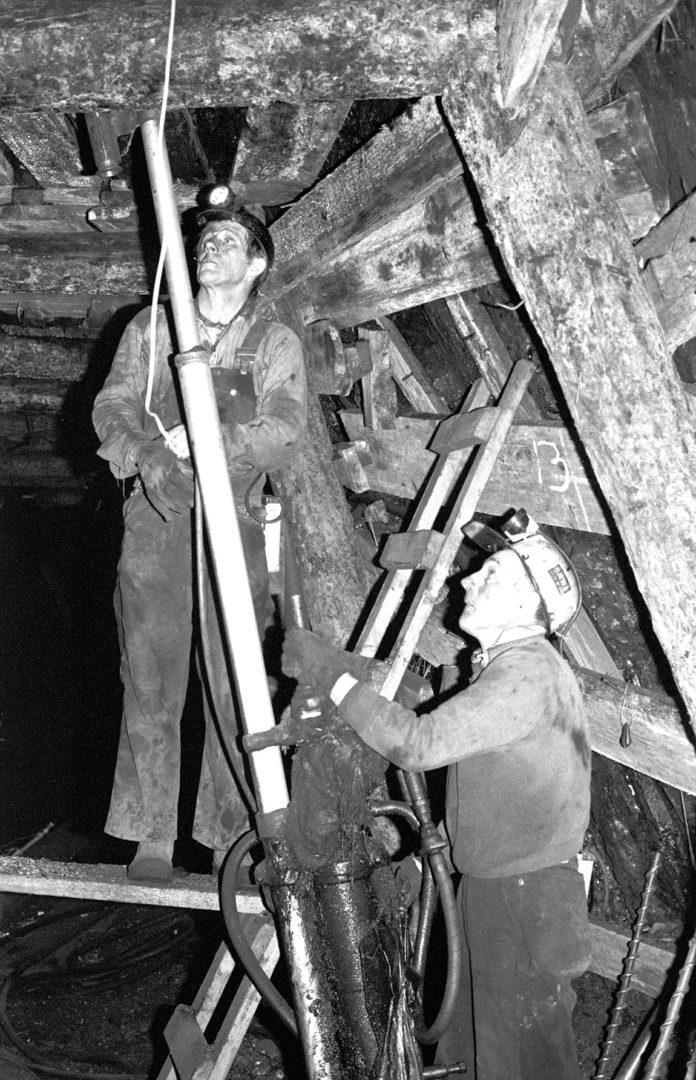In this April 1974 photo by Barry Kombol, two coal miners of Croatian descent are shown drilling 800 feet underground in the gangway of the Rogers No. 3 mine in Ravensdale. Joe Ozbolt from Roslyn stands on a platform, while John Costanich of Enumclaw operates a hydraulic drill. After drilling, the holes were loaded with dynamite needed to break up the coal and allow easy loading on cars hoisted to the surface. Both were life-long coal miners like their fathers before them who’d emigrated from Croatia to U.S. Croats were one of the more prominent nationalities laboring in Washington’s coal mines. Fleeing poverty, thousands of Croats arrived in America between 1880 and 1914. The first wave consisted mostly of unskilled workers seeking fortunes in the U.S. with plans to return home. Many sent money back to their families, markedly improving the economic conditions of countrymen back home.In 1938, the South Slav Herald reported that two-thirds of the new homes constructed in Croatia over the past three decades had been built with American money.
Most Croatian immigrants lived hard lives. Few spoke English and most worked backbreaking jobs in coal mining and construction. Fraternal organizations provided assistancewhen a crisis resulted in injury or death. Support groups often helped members pay for funeral arrangements. In fact some Croatian clubs owned their own graveyards. The coal mining town of Roslyn supported a large Croatian population and accompanying cemeteries. This Saturday, May 26 at 3 p.m. in Roslyn, the dedication of the Croatian Memorial Monument will pay tribute to pioneering Croats who helped shape the coal mining towns of Roslyn, Ronald, and Cle Elum and to all Croatian emigrants and their families who have contributed to their adopted country’s history and culture. After the dedication, celebrants will assemble at the nearby Ronald Gymnasium (Hawthorne Hall) for fun, food, drink, and a performing troupe of Croatian dancers and musicians.








